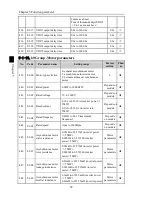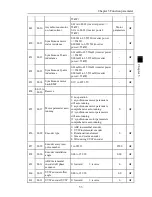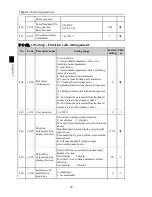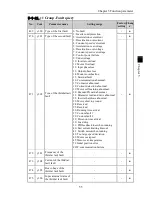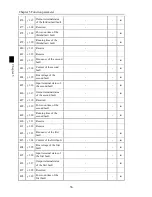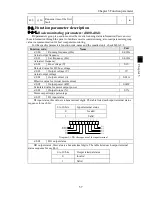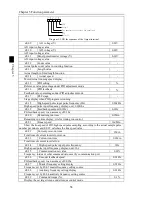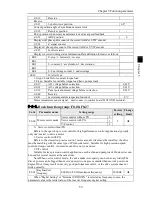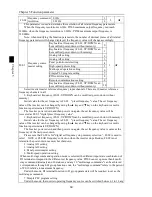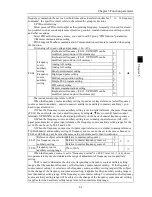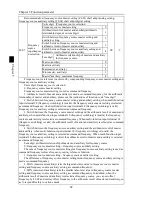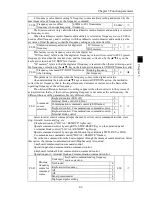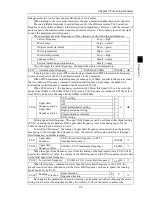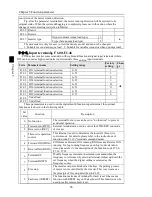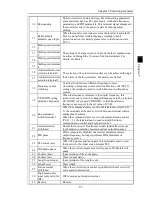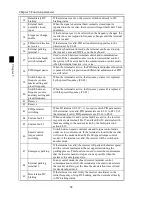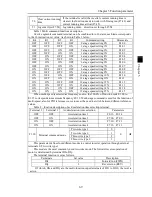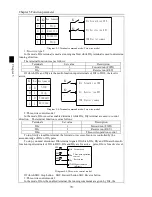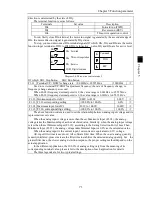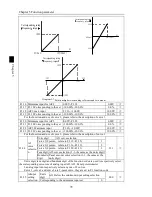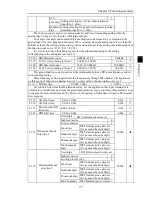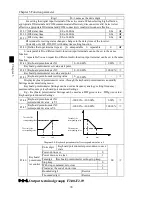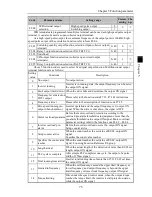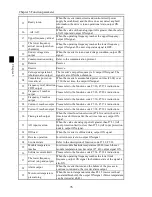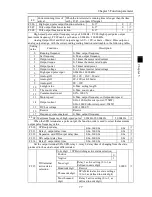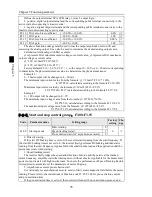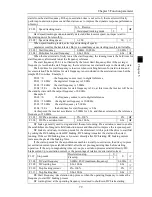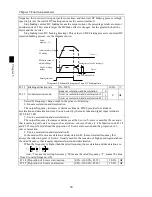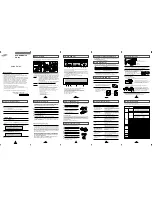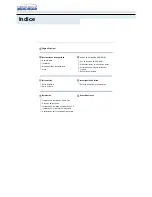
Chapter 5 Function parameter
65
Ch
ap
ter 5
leakage protective device may cause malfunction or overcurrent.
When running at the low carrier frequency, the above-mentioned phenomenon are opposite.
There are different responds to carrier frequency for the different motors. The best carrier
frequency can be obtained based on the Actual situation adjustment. However, with the increase of
motor capacity, the smaller carrier frequency should be selected. This company reserves the right
to limit the maximum carrier frequency.
The adjustment of carrier frequency will have impacts on the following performances:
Carrier Frequency
Low → high
Motor noise
Large → small
Output current waveform
Poor → good
Motor temperature
High → low
Inverter temperature
Low → high
Leakage current
Small → large
External radiation and interference
Small → large
Note: the larger the carrier frequency, the higher the whole unit temperature
F0.19
Aximum output frequency
50.00Hz~320.00Hz
50.00Hz
★
If analog input, pulse input (DI5) or multi-stage command in PI500 is selected as frequency
source, the respective 100.0% is calibrated relative to the parameter.
When PI500 maximum output frequency reaches up to 3200Hz, in order to take into account
the two indexes of frequency command resolution and frequency input range, the number of
decimal places for frequency command can be selected by F0.02 .
When F0.02 selects 1, the frequency resolution is 0.1Hz, at this time F0.19 can be set in the
range from 50.0Hz to 3200.0Hz; When F0.02 selects 2, the frequency resolution is 0.01Hz, at this
time F0.19 can be set in the range from 50.00Hz to 320.00Hz.
F0.20
Upper limit
frequency source
Upper limit
frequency source
F0.21 setting
0
0
★
AI1
1
AI2
2
Panel potentiometer setting
3
High-speed pulse setting
4
Communications reference
5
F0.21 setting
6
Setting upper limit frequency. The upper limit frequency can be set from either digital setting
(F0.21) or analog input channels. If the upper limit frequency is set from analog input, the set
100% of analog input is relative to F0.19.
To avoid the "Runaway", the setting of upper limit frequency is required, when the inverter
reaches up to the set upper limit frequency value, the inverter will remain operation at the upper
limit frequency, no further increase.
F0.21
Upper limit
frequency
F0.23 (lower limit frequency) to F0.19
(maximum frequency)
50.00Hz
☆
F0.22
Upper limit
frequency offset
0.00Hz to F0.19 (maximum frequency)
0.00Hz
☆
When the upper limit frequency is set from the analog or the high-speed pulse, F0.22 will be
used as the offset of set value, the overlay of the offset frequency and F0.20 is used as the set value
of the final upper limit frequency.
F0.23
Lower limit frequency
0.00Hz to F0.21 (lower limit frequency)
0.00Hz
☆
When the frequency command is lower than the lower limit frequency set by F0.23, the
inverter can shut down, and then run at the lower limit frequency or the zero speed, the running
mode can be set by F7.18.
F0.24
Running direction
Same direction
0
0
☆
Opposite direction
1
By changing the parameters, the motor steering can be achieved without changing the motor
wiring, which acts as the adjustment of any two lines(U, V, W) of the motor to achieve the


